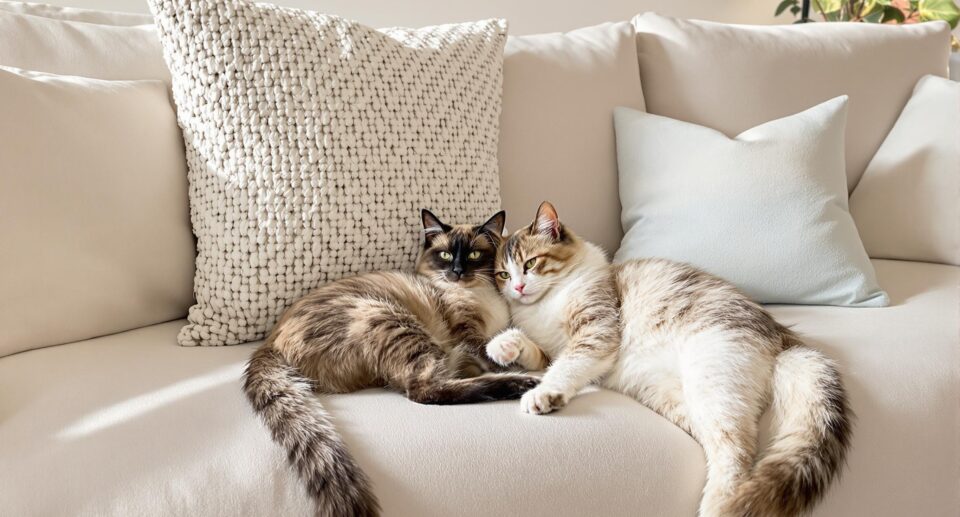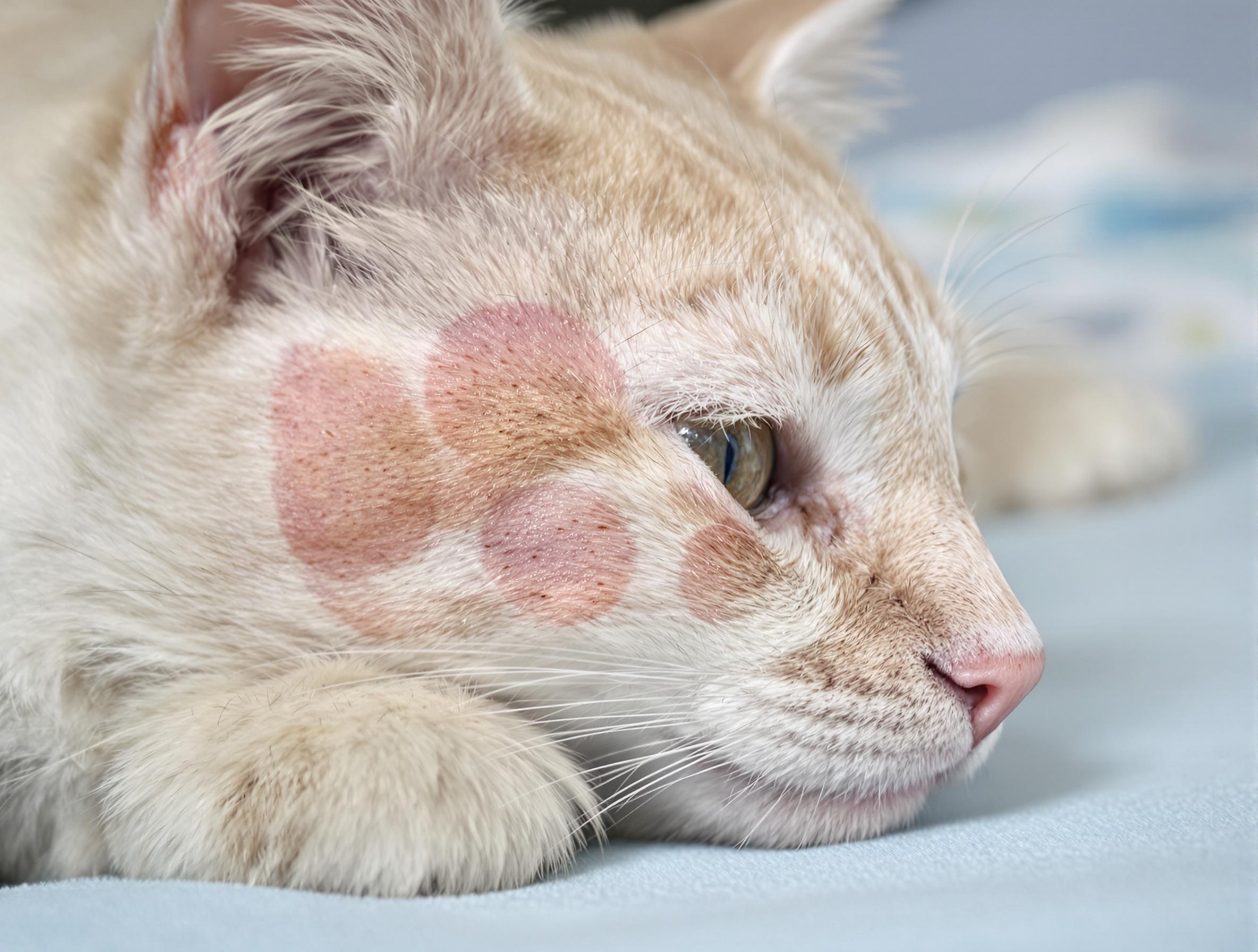
Key takeaways:
- When introduced thoughtfully, female cats can form strong, lasting friendships, respecting their unique social needs and territorial instincts.
- Understanding individual personality traits and social preferences is crucial for preventing stress-related behaviors and fostering harmonious relationships among female cats.
- Resource distribution matters significantly in multi-cat homes—providing multiple feeding stations, litter boxes, scratching posts, and resting areas at different heights helps prevent competition and reduces tension.
You might be worried about your cats getting along, especially if you’ve heard that female cats are particularly territorial or difficult to integrate. The good news is that female cats can become great friends. Research shows that while they might seem territorial initially, they often develop strong, lasting bonds when introduced correctly. Just like people, your cats develop friendships at their own pace, influenced by their unique personalities, early life experiences, and the environment you create at home.
Creating beautiful friendships between your female cats begins with understanding what makes them tick socially. PetHealthMD has guides to help you decode these natural cat behaviors and develop effective strategies.
Understanding female cat behavior
Your cats possess unique personalities that shape their relationships with other felines. Their social nature—whether they’re deeply affectionate or more reserved—is influenced by genetics, upbringing, and living environment. Recognizing these characteristics can help you to better support your cats’ social needs and prevent common behavioral challenges.
Also important to know: territory. Cats in general naturally claim special places within your home—a normal feline instinct also discussed in our guide about preventing indoor spraying. Your cats communicate ownership through subtle behaviors like face-rubbing on furniture or leaving their scent by kneading.
Some female cats readily welcome new friends, while others need more personal space—both approaches are normal cat behavior. Understanding these preferences helps you prevent stress-related behaviors, which are among cat parents’ most common concerns. Allowing your cats to form bonds at their own pace creates more successful, lasting friendships.
Tips for helping female cats get along
Your female cats can form social bonds, but need the right introduction approach. Think of it like making new friends as an adult—it takes time and the right environment to feel comfortable.
- Create private retreats: Install dedicated “cat caves” in separate rooms where female cats can safely observe their surroundings without feeling threatened.
- Distribute resources widely: Place multiple feeding stations, litter boxes, and scratching posts at different elevations to reduce competition.
- Guide positive interactions: Schedule structured bonding sessions through parallel play, keeping each cat focused on their toy while sharing space.
- Provide vertical escape routes: Install elevated paths allowing female cats to move through shared spaces without confrontation.
How to introduce two female cats successfully

A gradual introduction process helps build lasting bonds between female cats. Follow these proven steps to create positive first meetings while keeping both cats safe and confident.
- Create comfortable sanctuaries: Set up separate spaces for each cat with cozy beds, scratching posts, and private dining areas.
- Exchange scents first: Gently rub a soft cloth around each cat’s cheeks, then place it in the other’s area. Look for positive reactions like gentle sniffing or rubbing against the cloth.
- Arrange visual meetings safely: For first face-to-face encounters, use a see-through barrier like a tall baby gate. Watch for friendly signals: slow blinking, relaxed whiskers, and tails held high with gentle curves.
- Meet in neutral territory: Schedule brief introductions in spaces neither cat has claimed. Keep treats handy to reward calm behaviors like sitting quietly or showing casual interest.
- Gradually increase together time: When you notice encouraging signs—both cats grooming themselves, maintaining comfortable distances, or showing interest in shared toys—slowly extend their sessions.
Female cat hierarchy challenges

If you have more than one female cats in your house, they naturally create social structures that influence their daily routines. The cats who’ve been around longer or are a bit older usually end up being the leader, and you’ll notice this in how they claim the best napping spots and even who eats first at mealtime. This is the female cat hierarchy—a natural balance of personalities that maintains peace in your multi-cat home.
Female cats deeply value their space and boundaries. Even the friendliest cats may become protective of their favorite areas, particularly when new cats join your family or younger cats mature. Pay attention to subtle clues like your cat blocking doorways or taking over the sunniest windowsill. These behaviors typically indicate territorial needs.
Household harmony begins with respecting each of your cat’s need for personal space. Behavior specialists have discovered that cats thrive when they have choices for resting, playing, and daily activities. Creating cozy spots at different heights, placing food dishes in separate locations, and providing multiple comfortable litter boxes help prevent tension.
FAQs about female cat friendships
Here are answers to common questions about helping your feline friends build lasting bonds:
How can I tell if my female cats are bonding?
Look for these heartwarming indicators of growing friendship:
- Sleeping or relaxing near each other
- Gentle mutual grooming sessions
- Playful chasing without hissing or growling
- Touching noses or wrapping tails during greetings
Remember, bonding develops gradually, and each pair creates unique relationship styles.
What are the warning signs of cat tension?
Be alert for these stress signals:
- Blocking access to food bowls or litter boxes
- Frequent hissing or growling
- Chasing with aggressive body language
- One cat hiding more than usual
How do I create a peaceful multi-cat home?
Foster a stress-free environment by:
- Placing food bowls in separate, quiet areas
- Setting up litter boxes in different rooms
- Creating multiple cozy resting spots at various heights
- Providing individual scratching posts and toys
Your cats will appreciate having special spaces while learning to share their home.
When should I seek professional help?
If you notice persistent tension or changes in eating, drinking, or litter box habits. Research shows unrelated female cats sometimes need extra support in bonding. Schedule a consultation with a veterinarian to discuss your cats’ needs and develop a tailored plan.
Fostering female cat friendships
Pay attention to small victories as your female cats learn to live together peacefully. Watch their daily interactions and adjust their environment based on what you observe—perhaps moving feeding stations when you notice tension or adding elevated perches when cats seek separate spaces. Understanding these natural social dynamics helps create an environment where female cats develop strong bonds, similar to how naturally socialized cats form healthy relationships. PetHealthMD supports your efforts toward feline harmony through comprehensive resources.





